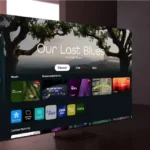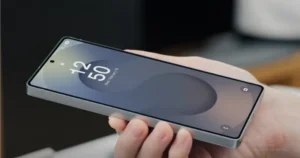
Foldable phones are the latest trend in the smartphone industry. These phones have a flexible display that can be folded in half, giving users the best of both worlds: a large screen for multitasking and productivity, and a compact form factor for portability.
Table of Contents
What is a foldable phone?
A foldable phone is a smartphone with a flexible display that can be folded in half. The first foldable phone was released in 2019, and the technology has been improving rapidly ever since. Prices have come down, durability has increased, and more and more apps are being optimized for foldable phones. As a result, foldable phones are becoming more and more popular.
The potential of foldable phones
Foldable phones have the potential to change the way we use phones. They can be used as a tablet when unfolded, and as a phone when folded. This makes them ideal for tasks that require a large screen, such as watching videos, playing games, or working on documents. Foldable phones can also be used as a mini laptop, making them a more versatile device than a traditional smartphone.
History of the Foldable Phone
The first foldable phone was the Royole FlexPai, released in 2019. It was followed by the Samsung Galaxy Fold and the Huawei Mate X. These early foldable phones were expensive and had some durability issues. However, the technology has improved significantly since then, and foldable phones are becoming more affordable and reliable.
Foldable phones have become more popular in recent years, with more and more smartphone manufacturers releasing them.
The popularity of foldable phones is due to several factors, including:
- The increasing demand for larger screens.
- The desire for a more portable device.
- The improvement in the technology used in foldable phones.
Advantages of foldable phones
Larger screen size for multitasking and productivity: Foldable phones can be used as a tablet when unfolded, and as a phone when folded. This makes them ideal for tasks that require a large screen, such as watching videos, playing games, or working on documents.
More portable and convenient than tablets: Foldable phones are smaller and lighter than tablets, making them easier to carry around. They can also be folded up and put in a pocket or purse.
More durable than previous generations of foldable phones: The technology used in foldable phones has improved in recent years, making them more durable. However, they are still more fragile than traditional smartphones.
Prices are becoming more affordable: The prices of foldable phones have come down in recent years. This makes them more accessible to a wider range of consumers.
More smartphone manufacturers are releasing foldable phones: In the past, only a few smartphone manufacturers released foldable phones. Today, more and more manufacturers are releasing them, which is helping to drive down prices and increase competition.
Developers are starting to optimize their apps for foldable phones: In the past, there were not many apps that were optimized for foldable phones. However, this is starting to change, as more developers are creating apps that take advantage of the larger screen size and unique features of foldable phones.
Here are some additional advantages of foldable phones:
- They can be used in a variety of ways: Foldable phones can be used as a phone, a tablet, or even a mini laptop. This makes them a very versatile device.
- They are more immersive: The larger screen size of foldable phones makes them more immersive for watching videos, playing games, or reading books.
- They are more stylish: Foldable phones are often seen as being more stylish than traditional smartphones.
Opportunities for Businesses and Consumers
For businesses
- Foldable phones could be used to create new products and services. For example, businesses could create foldable phones that are specifically designed for gaming, productivity, or entertainment.
- Foldable phones could be used to improve customer service. For example, businesses could use foldable phones to provide remote support to customers or to give customers a more immersive shopping experience.
- Foldable phones could be used to collect data about customers. This data could be used to improve the customer experience or to develop new products and services.
For consumers
- Foldable phones could be used to improve productivity. For example, foldable phones could be used to take notes, work on documents, or watch videos while on the go.
- Foldable phones could be used to improve entertainment. For example, foldable phones could be used to watch movies, play games, or read books in a more immersive way.
- Foldable phones could be used to improve creativity. For example, foldable phones could be used to sketch, paint, or write music in a more portable way.
Challenges of foldable phones
High price
Foldable phones are still more expensive than traditional smartphones. This is a major barrier to adoption for many consumers.
Durability concerns
Foldable phones are still more fragile than traditional smartphones. This is a concern for many consumers, as they are worried about damaging their phones.
Lack of app support
Not all apps are optimized for foldable phones. This can be a frustrating experience for users, as they may not be able to use all of their favorite apps on their foldable phone.
Fold crease
The foldable screen of a foldable phone often has a visible crease, which can be distracting for some users.
Water resistance
Foldable phones are not as water-resistant as traditional smartphones. This can be a problem for users who are looking for a phone that they can use in all weather conditions.
Battery life
Foldable phones often have shorter battery life than traditional smartphones. This is due to the larger screen and the complex technology involved in folding the screen.
Conclusion
The foldable phone revolution is still unfolding, but it has the potential to change the way we use phones. As technology continues to improve, foldable phones are now more popular and mainstream. I am excited to see how foldable phones develop in the years to come.








